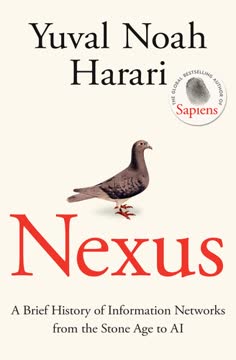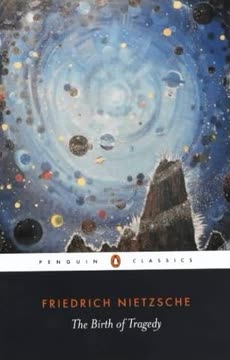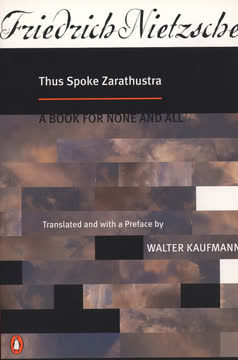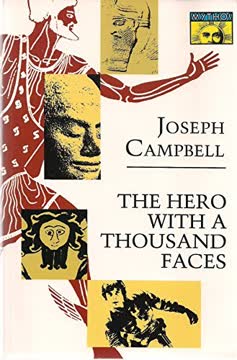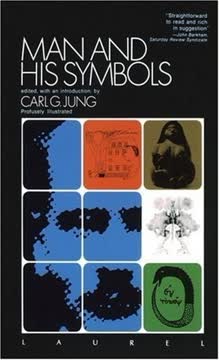가지 주요 요점
1. 무의식은 인간 행동과 경험을 형성하는 데 중요한 역할을 한다
무의식은 단순히 불쾌한 것들을 담는 그릇이 아니라, 모든 선과 악의 근원이다.
숨겨진 마음. 무의식은 우리의 생각, 감정, 행동에 영향을 미치는 방대한 정보, 기억, 본능을 포함하고 있다. 이는 우리의 의식적인 인식 너머에서 작동하지만, 우리의 경험과 의사결정 과정을 깊이 있게 형성한다.
이중적 성격. 융은 무의식이 단순히 억압된 생각과 욕망의 저장소가 아니라, 역동적이고 창조적인 힘이라고 강조했다. 무의식은 긍정적이고 부정적인 측면을 모두 포함하며, 성장과 파괴의 잠재력을 제공하는 원천이다.
무의식의 구성 요소:
- 개인 무의식: 개인의 억압된 기억과 경험
- 집단 무의식: 보편적이고 유전된 패턴과 본능
- 콤플렉스: 감정적으로 충전된 아이디어와 기억의 집합체
- 그림자: 인격의 어두운, 인정되지 않은 측면
2. 원형은 인간 정신을 구조화하는 보편적인 패턴이다
원형은 개인의 삶을 보이지 않는 방식으로 결정하는 살아있는 반응과 능력의 체계이다.
유전적 청사진. 원형은 집단 무의식에서 유래한 선천적이고 보편적인 패턴이나 이미지이다. 이는 기본적인 인간 경험과 관계를 나타내며, 우리가 세상을 인식하고 상호작용하는 방식을 형성한다.
상징적 표현. 원형 자체는 추상적이지만, 상징, 신화, 문화적 모티프를 통해 우리의 의식 속에 나타난다. 이러한 표현은 문화마다 다를 수 있지만, 근본적인 패턴은 일관성을 유지한다.
융이 식별한 주요 원형:
- 자기: 정신의 중심 조직 원리
- 그림자: 인격의 어두운, 억압된 측면
- 아니마/아니무스: 정신의 반대 성적 측면
- 현자: 지혜와 의미의 원형
- 영웅: 변형과 성장의 원형
3. 개별화 과정은 심리적 완전성과 자기 실현으로 이끈다
개별화는 "개인"이 되는 것을 의미하며, "개인성"이 우리의 가장 내면적이고, 마지막이며, 비교할 수 없는 독특함을 포괄하는 한, 그것은 또한 자신의 자아가 되는 것을 의미한다.
완전성을 향한 여정. 개별화는 평생에 걸친 심리적 발달과 통합의 과정이다. 이는 자신의 인격의 다양한 측면, 특히 무의식적 요소를 인식하고 통합하여 완전성과 진정성을 달성하는 것을 포함한다.
균형 잡기. 개별화 과정은 사회의 요구와 자신의 내적 필요와 잠재력을 균형 있게 맞추는 것을 요구한다. 이는 그림자를 직면하고 통합하며, 아니마/아니무스와의 관계를 발전시키고, 궁극적으로 자아를 실현하는 것을 포함한다.
개별화의 단계:
- 페르소나 개발: 사회적 기대에 적응하기
- 그림자 통합: 자신의 어두운 면을 인정하고 받아들이기
- 아니마/아니무스 개발: 반대 성적 측면 통합하기
- 자기 실현: 완전성과 의미의 감각 달성하기
4. 꿈은 무의식에 대한 귀중한 통찰을 제공한다
꿈은 의지의 통제를 벗어난 무의식적 정신의 자발적 산물이다. 그것들은 순수한 자연이며, 우리의 의식이 그 기초에서 너무 멀리 벗어나고 막다른 골목에 다다랐을 때, 우리의 기본 인간 본성에 부합하는 태도를 되찾게 해주는 것처럼 아무것도 없다.
정신에 대한 창. 꿈은 우리의 내적 갈등, 욕망, 잠재력을 상징적으로 표현하여 무의식에 직접 접근할 수 있는 경로를 제공한다. 꿈은 자연적인 보상 기능을 수행하여 우리의 의식적 태도를 균형 있게 맞추고 심리적 성장을 위한 지침을 제공한다.
해석과 분석. 융은 고정된 상징 해석에 의존하기보다는 개인의 삶과 정신의 맥락에서 꿈을 이해하는 것이 중요하다고 강조했다. 그는 증폭과 적극적 상상과 같은 방법을 개발하여 꿈의 자료를 다루었다.
융의 꿈 분석의 주요 측면:
- 개인적 연상: 꿈꾸는 사람의 상징에 대한 독특한 연결 탐구
- 집단적 상징: 보편적이고 문화적인 의미 고려
- 보상 기능: 꿈이 의식적 태도를 어떻게 균형 있게 맞추는지 이해
- 예측적 측면: 꿈이 미래 발전을 안내할 잠재력 인식
5. 반대의 통합은 심리적 성장에 필수적이다
긴장이 클수록 잠재력도 크다. 큰 에너지는 그에 상응하는 큰 반대의 긴장에서 나온다.
역동적 균형. 융은 정신 내의 반대 세력을 인식하고 통합하는 것이 중요하다고 강조했다. 이 통합 과정, 즉 초월 기능은 더 큰 심리적 완전성과 창의성으로 이어진다.
이중성 수용. 융은 반대의 한쪽을 제거하려고 하기보다는 반대 사이의 긴장을 유지하는 것을 옹호했다. 이 접근법은 양쪽 요소를 통합하는 세 번째, 초월적 위치의 출현을 가능하게 한다.
심리적 반대의 예:
- 의식 vs. 무의식
- 사고 vs. 감정
- 내향성 vs. 외향성
- 빛 vs. 그림자
- 남성성 vs. 여성성
6. 동시성은 심리적 사건과 물리적 사건 사이의 의미 있는 연결을 드러낸다
동시성은 볼 줄 아는 사람에게 항상 존재하는 현실이다.
비인과적 연결. 동시성은 원인과 결과로 설명할 수 없는 내적 사건과 외적 사건 사이의 의미 있는 우연을 의미한다. 융은 이 개념을 정신과 물질의 관계를 이해하는 방법으로 제안했다.
확장된 세계관. 동시성 사건의 인식은 우리의 기존 현실 이해에 도전하며, 우주 내의 더 깊고 상호 연결된 질서를 시사한다. 이 관점은 양자 물리학과 시스템 이론의 발전과 일치한다.
동시성 사건의 특성:
- 내적 사건과 외적 사건 사이의 의미 있는 우연
- 사건들 사이에 인과 관계가 없음
- 의미의 주관적 해석
- 종종 심리적 변형의 시기와 관련됨
7. 자기 인식은 개인 발전과 사회적 진보의 열쇠이다
당신의 비전은 당신이 자신의 마음을 들여다볼 때만 명확해질 것이다. 밖을 보는 사람은 꿈꾸고, 안을 보는 사람은 깨어난다.
내적 탐구. 융은 자기 성찰과 내성의 중요성을 심리적 성장의 기초로 강조했다. 자신의 동기, 두려움, 잠재력을 이해함으로써 우리는 더 의식적인 선택을 하고 더 진정성 있는 삶을 살 수 있다.
사회적 함의. 융은 개인의 자기 인식이 사회 전체의 건강에 중요하다고 믿었다. 개인이 자신의 내적 작용을 더 의식하게 되면, 그들은 무의식적 내용을 다른 사람에게 투사하거나 대중 운동에 빠질 가능성이 줄어든다.
자기 인식을 개발하는 방법:
- 꿈 분석
- 적극적 상상
- 일기 쓰기와 자기 성찰
- 심리 치료
- 상징과 신화 탐구
8. 종교와 영성은 중요한 심리적 기능을 수행한다
종교는 의식과 독립적이고 그 너머에 있는 심리적 과정과의 중요한 연결 고리이다.
심리적 중요성. 융은 종교적이고 영적인 경험을 단순한 문화적 산물이 아니라 인간 심리의 필수적인 측면으로 보았다. 그는 종교적 상징과 관행이 심리 내에서 중요한 기능을 수행하며, 의미와 초개인적 영역과의 연결을 제공한다고 주장했다.
개인적 접근. 조직화된 종교의 가치를 인정하면서도, 융은 신성한 경험의 개인적이고 직접적인 경험의 중요성을 강조했다. 그는 개인이 자신의 독특한 심리적 구성에 기반하여 영적 차원과의 관계를 발전시키도록 권장했다.
종교의 심리적 기능:
- 의미와 목적 제공
- 원형적 패턴의 상징적 표현 제공
- 의식적과 무의식적 내용의 통합 촉진
- 개별화 과정 지원
- 개인을 집단 무의식과 연결
9. 현대 사회는 개인의 자율성과 집단 정체성의 균형을 맞추는 데 어려움을 겪고 있다
신경증의 두드러진 특징은 그것이 개인적일 뿐만 아니라 동시에 집단적 현상이라는 것이다.
대중 심리학. 융은 현대 사회가 개인의 심리적 발달에 미치는 영향에 깊은 우려를 표명했다. 그는 개인이 대중 운동과 집단 이데올로기에 직면하여 개인적 책임과 정체성을 잃는 경향을 관찰했다.
개인성 vs. 순응. 현대 개인의 도전 과제는 독특한 정체성과 개인적 가치를 유지하면서도 사회에 참여하는 것이다. 융은 개인 발달과 사회적 책임 사이의 균형을 옹호했다.
현대 사회의 심리적 도전 과제:
- 전통적인 의미의 원천과의 연결 상실
- 사회적 기대에 순응해야 하는 압박
- 자연과 본능적 지혜로부터의 소외
- 다른 인식 방식의 희생을 감수한 합리성의 과도한 강조
- 사회적 "타자"에게 개인의 그림자 내용 투사
10. 자아의 개념은 정신의 전체성과 완전성의 잠재력을 나타낸다
자아는 중심일 뿐만 아니라 의식과 무의식을 모두 포괄하는 전체 둘레이다. 그것은 이 전체의 중심이며, 자아는 의식의 중심이다.
중심 원형. 자아는 정신의 중심 조직 원리로, 의식적 요소와 무의식적 요소의 전체를 나타낸다. 이는 개별화 과정의 목표이자 안내하는 힘이다.
완전성의 상징. 자아는 종종 꿈과 문화적 상징에서 만다라, 신성한 아이, 현자와 같은 완전성의 이미지로 나타난다. 이러한 상징은 정신 내의 통합과 완전성의 잠재력을 가리킨다.
자아의 특성:
- 자아를 초월하고 포함함
- 반대의 통일을 나타냄
- 개별화 과정을 안내함
- 완전성과 완전성의 상징으로 나타남
- 개인을 집단 무의식과 연결함
마지막 업데이트 날짜:
FAQ
What's The Essential Jung about?
- Compilation of Jung's Work: The Essential Jung is a collection of key writings by Carl Gustav Jung, selected by Anthony Storr. It focuses on Jung's theories of the unconscious, archetypes, and individuation.
- Psychological and Spiritual Exploration: The book delves into the complexities of the human psyche, emphasizing the interplay between the conscious and unconscious mind, and the spiritual dimensions of personal growth.
- Cultural and Historical Context: Jung's ideas are placed within a broader cultural and historical framework, examining their relevance to religious beliefs and societal changes.
Why should I read The Essential Jung?
- Foundational Psychological Concepts: The book introduces foundational concepts in analytical psychology, essential for anyone interested in psychology, therapy, or personal development.
- Insight into Human Psyche: Jung's exploration of archetypes and symbols provides insights into personal behaviors and motivations, enhancing self-awareness.
- Relevance to Modern Issues: Jung's ideas about the collective unconscious and self-awareness are particularly relevant in today's world, addressing feelings of disconnection and the quest for meaning.
What are the key takeaways of The Essential Jung?
- Individuation Process: A central theme is individuation, the process of integrating various aspects of the self to achieve wholeness.
- Archetypes and Collective Unconscious: Jung emphasizes the existence of universal symbols and themes that shape human experiences and behaviors.
- Importance of Self-Knowledge: The book highlights the significance of understanding one's unconscious motivations for personal growth and fulfillment.
What is the collective unconscious according to Jung in The Essential Jung?
- Shared Psychological Heritage: The collective unconscious is a part of the unconscious mind shared among all humans, containing universal experiences and archetypes.
- Archetypes as Organizers: Archetypes are primordial images that shape our experiences and perceptions, influencing thoughts, feelings, and behaviors.
- Universal Themes: This concept explains why certain themes and symbols appear across different cultures and historical periods, reflecting commonalities in human experience.
What are archetypes, and how do they function in Jung's theory?
- Definition of Archetypes: Archetypes are innate, universal symbols and themes residing in the collective unconscious, representing fundamental human experiences.
- Influence on Behavior: They shape perceptions and reactions, often influencing dreams and fantasies, guiding understanding of self and relationships.
- Role in Therapy: Recognizing and integrating archetypes can facilitate personal growth and healing, offering insight into unconscious motivations and conflicts.
How does Jung define individuation in The Essential Jung?
- Process of Becoming Whole: Individuation is the process of integrating various aspects of the self, including the conscious and unconscious, to become a unified whole.
- Integration of Opposites: It involves reconciling opposing forces within the psyche, such as the shadow and the anima/animus, leading to a balanced personality.
- Lifelong Journey: Jung portrays individuation as a lifelong journey of self-discovery and personal development, requiring courage and commitment.
How does Jung differentiate between the persona and the shadow?
- Definition of Persona: The persona is the social mask or identity presented to the world, shaped by societal expectations and norms.
- Definition of Shadow: The shadow represents the repressed, darker aspects of the personality, including undesirable traits and emotions.
- Integration for Wholeness: Achieving psychological wholeness requires acknowledging and integrating both the persona and the shadow, fostering self-awareness.
What is the significance of the anima and animus in Jung's psychology?
- Contrasting Archetypes: The anima represents the feminine aspect of a man's psyche, while the animus represents the masculine aspect of a woman's psyche.
- Projection and Relationships: Individuals often project their anima or animus onto others, leading to idealized or distorted perceptions of partners.
- Path to Individuation: Engaging with the anima or animus facilitates individuation, allowing integration of inner opposites for greater self-understanding.
What role do dreams play in Jung's analytical psychology?
- Dreams as Compensatory: Dreams are compensatory expressions of the unconscious, providing insight into unresolved conflicts and hidden aspects of the self.
- Symbolic Language: They contain symbols and archetypes reflecting the dreamer's inner experiences and psychological state, crucial for understanding the psyche.
- Path to Individuation: Engaging with dreams helps integrate unconscious contents into conscious awareness, facilitating personal growth and self-discovery.
What is the relationship between alchemy and Jung's analytical psychology?
- Alchemy as a Metaphor: Jung viewed alchemy as a metaphor for individuation, where transforming base metals into gold symbolizes personal growth.
- Symbolism in Alchemy: Alchemical symbols parallel Jung's psychology, particularly regarding the integration of opposites and the quest for the Self.
- Historical Context: Alchemy represents a historical link between ancient wisdom and modern psychology, uncovering deeper meanings behind psychological phenomena.
What is the significance of synchronicity in Jung's work?
- Meaningful Coincidence: Synchronicity is the meaningful coincidence of events not causally related, suggesting connections through meaning rather than cause and effect.
- Psychic and Physical Events: It highlights the relationship between psychic states and physical events, indicating interconnectedness of psyche and external world.
- Implications for Psychology: Synchronicity challenges traditional causality views, opening new avenues for understanding human experience and reality.
How does The Essential Jung relate to modern psychological practices?
- Influence on Psychotherapy: Jung's concepts, like the collective unconscious and archetypes, significantly influence modern psychotherapy, especially in depth psychology.
- Holistic Approach: His work encourages a holistic approach to mental health, valuing emotional and spiritual well-being alongside psychological health.
- Cultural Sensitivity: Exploration of symbols and archetypes fosters cultural sensitivity in therapy, enhancing understanding of clients' experiences within cultural contexts.
리뷰
The Essential Jung은 융의 가장 중요한 저작들을 탁월하게 모아놓은 책으로, 독자들에게 그의 혁신적인 이론들에 대한 포괄적인 개요를 제공한다. 많은 평론가들은 이 책의 접근성을 칭찬하며, 융의 복잡한 사상에 대한 훌륭한 입문서로서의 역할을 한다고 평가한다. 일부 독자들은 연금술에 관한 부분이 특히 어렵다고 느꼈지만, 대다수는 제공된 통찰의 깊이와 폭을 높이 평가했다. 독자들은 이 책이 현대 심리학과 개인 성장에 얼마나 관련성이 높은지를 일관되게 강조했다.
Similar Books

